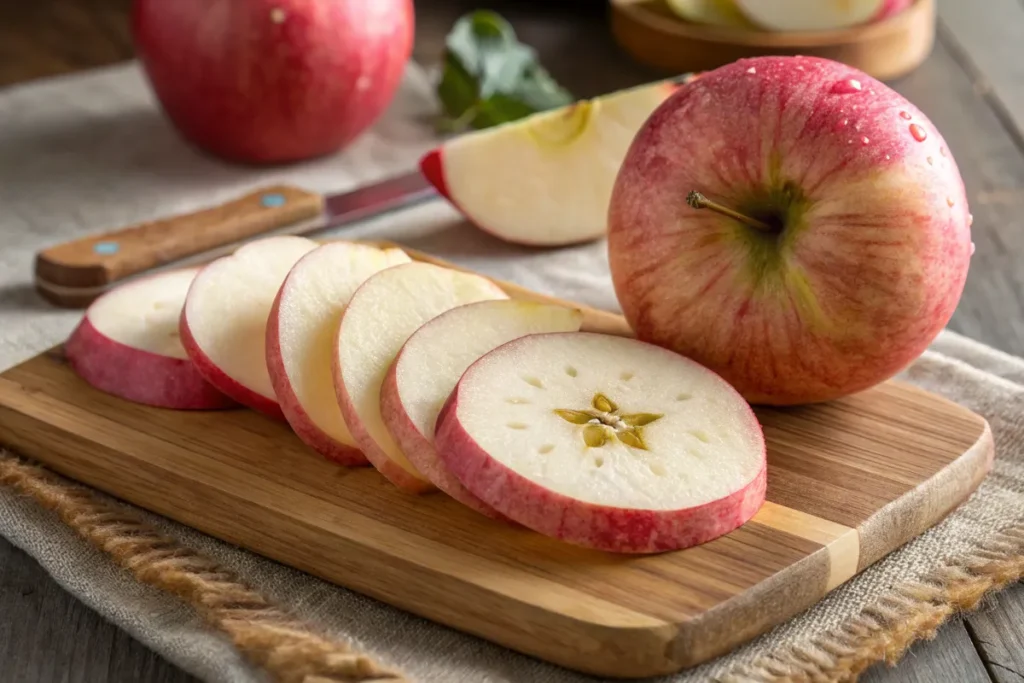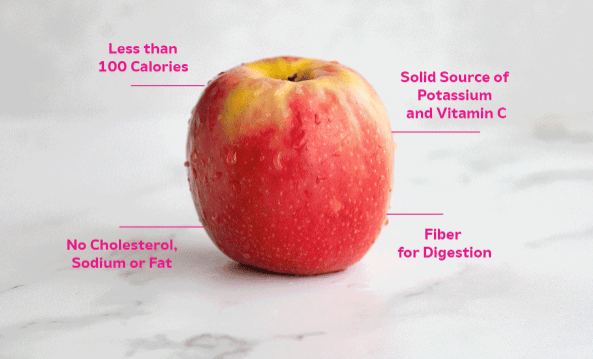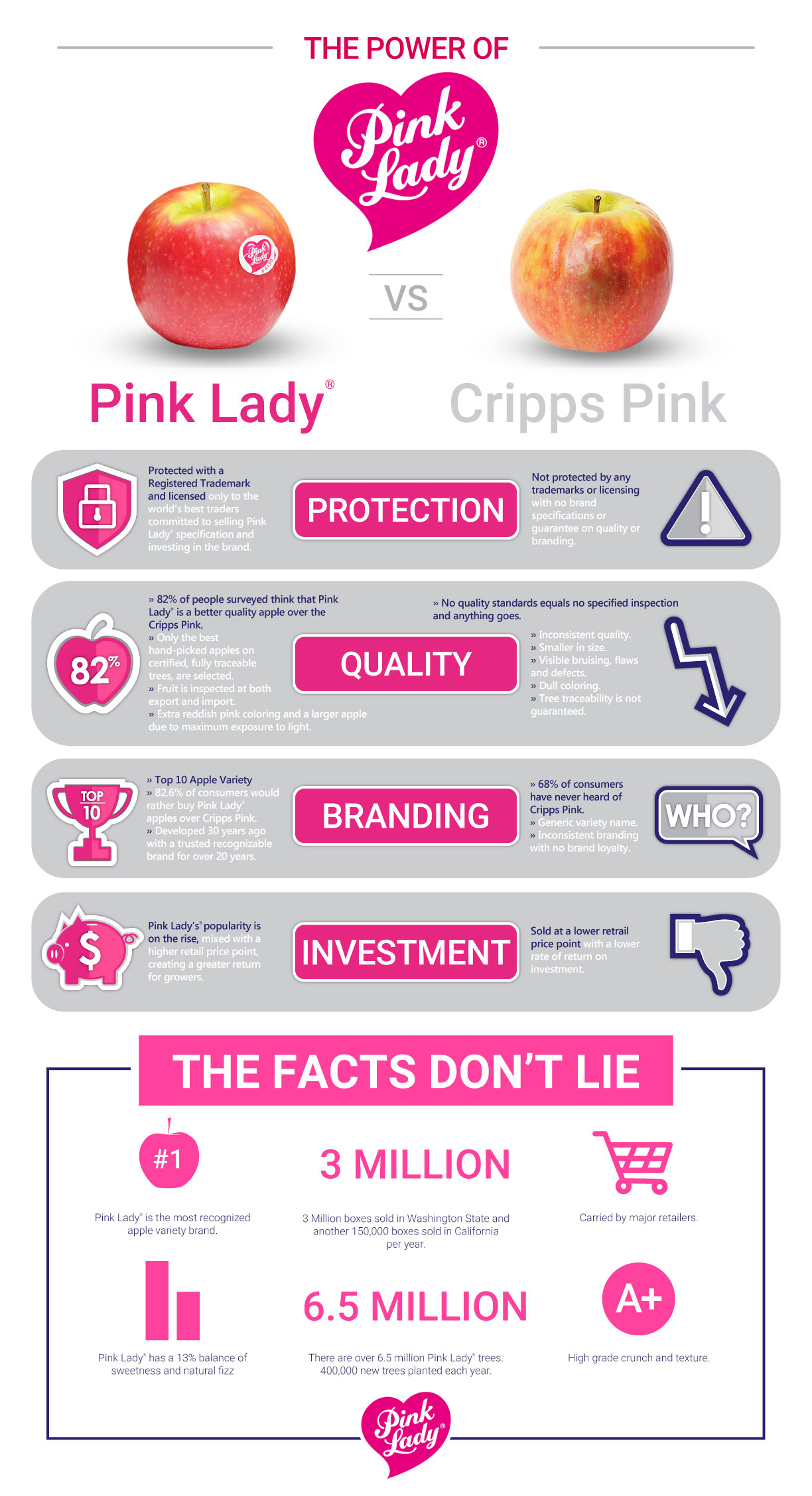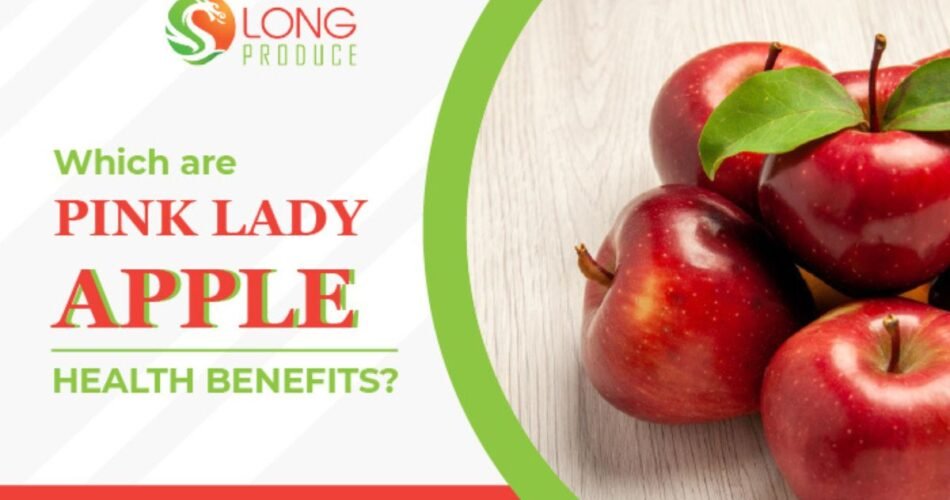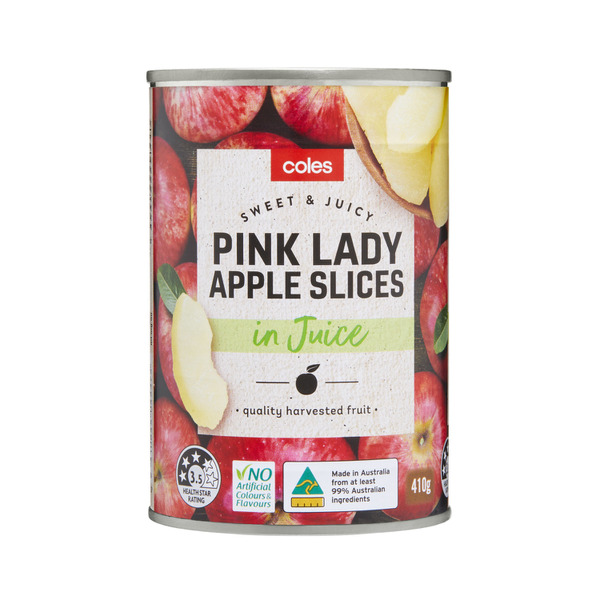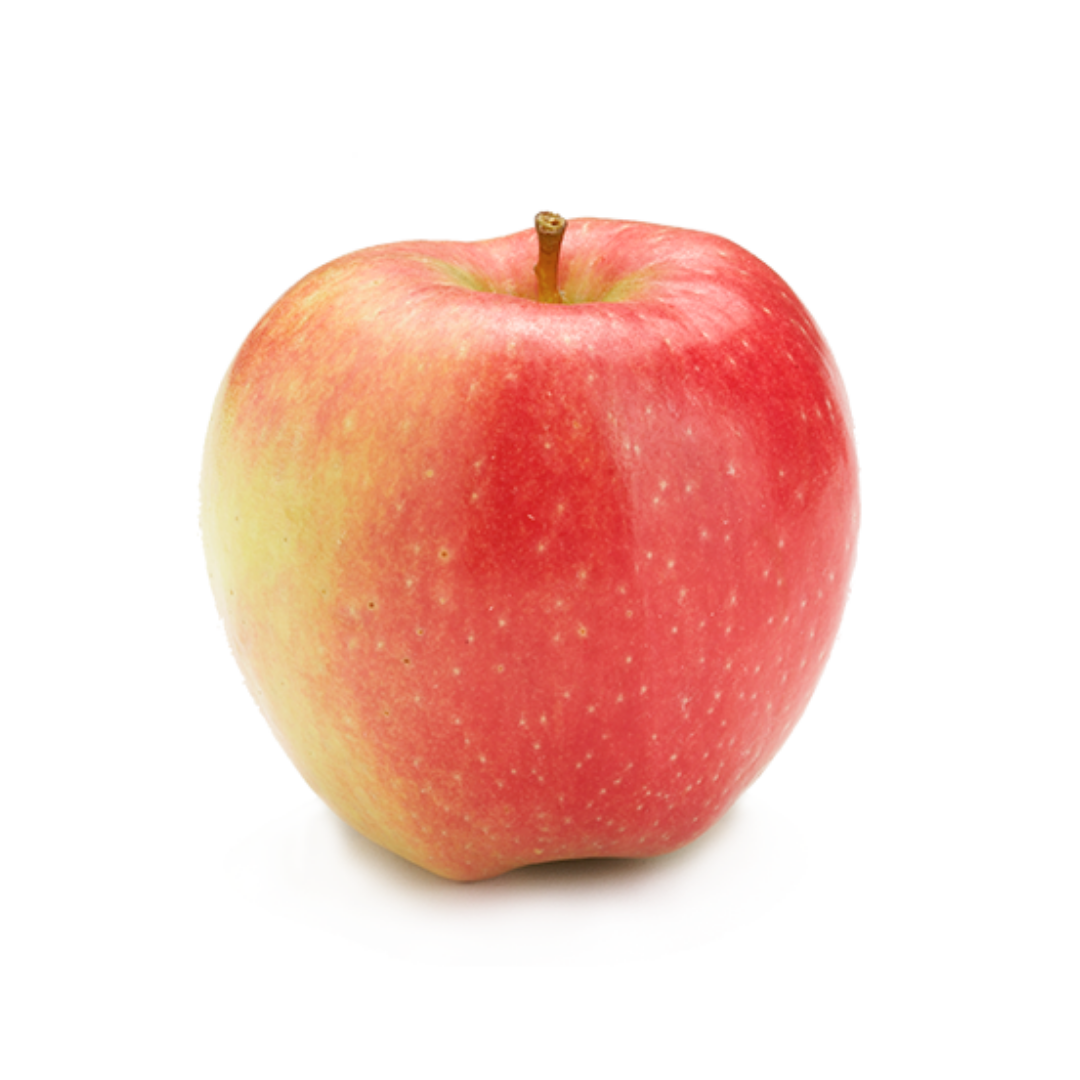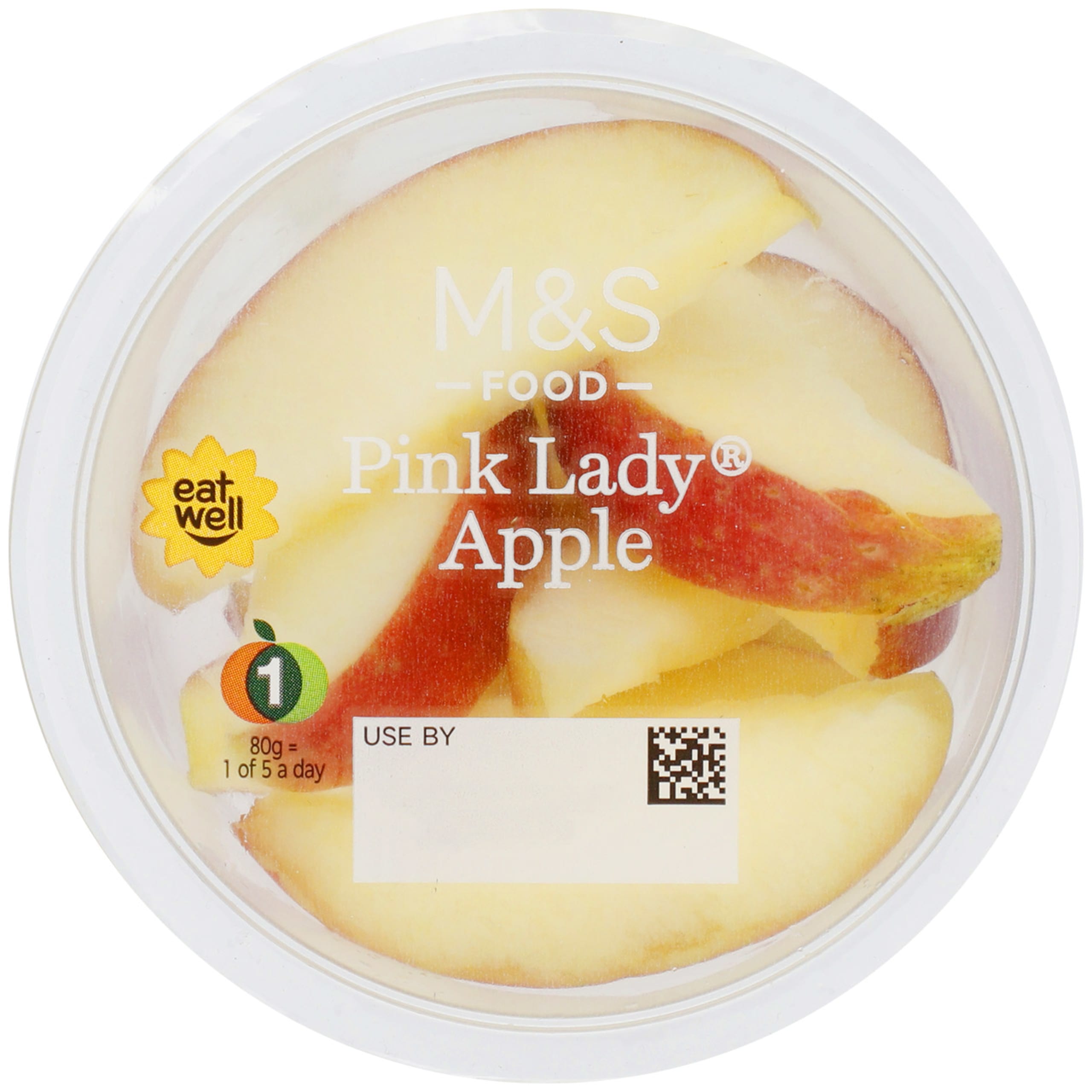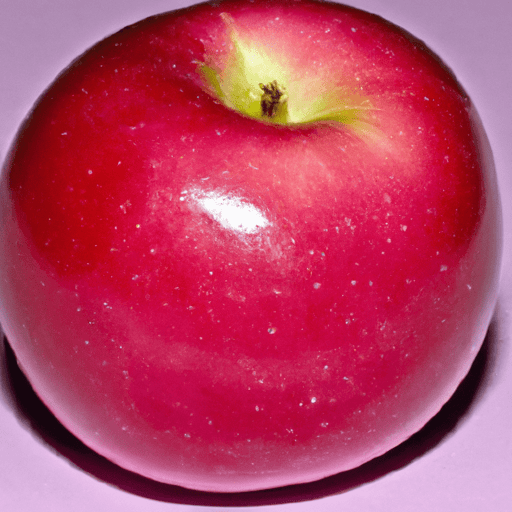Calories In 1 Pink Lady Apple

In a world increasingly obsessed with health and nutrition, understanding the caloric content of everyday foods has become paramount. While broad guidelines exist, the specifics often get lost, leaving consumers confused about what they're actually consuming. The humble apple, often touted as a healthy snack, is no exception, and determining the precise calorie count, especially for a specific variety like the popular Pink Lady, requires a closer look.
This article aims to dissect the caloric content of a Pink Lady apple, providing a comprehensive overview based on credible data sources. It will explore factors influencing calorie counts, compare Pink Lady apples to other varieties, and offer practical advice on incorporating them into a balanced diet. By providing clarity on this seemingly simple topic, we hope to empower readers to make informed dietary decisions.
What's in a Pink Lady Apple? Understanding Calorie Content
The caloric content of a Pink Lady apple, like any fruit, is primarily derived from its carbohydrate content, specifically sugars like fructose, glucose, and sucrose. Fiber, another type of carbohydrate, contributes minimal calories but plays a crucial role in satiety and overall health. A medium-sized Pink Lady apple (approximately 182 grams) generally contains around 95-100 calories.
Data from the USDA FoodData Central database indicates a medium Pink Lady apple contains approximately 95 calories. However, this is an average, and variations occur based on size and growing conditions.
Factors Influencing Calorie Count
Several factors can influence the exact calorie count of a Pink Lady apple. Size is the most obvious; a larger apple naturally contains more calories than a smaller one.
Growing conditions, including sunlight exposure, soil quality, and irrigation practices, can also affect sugar content, thus impacting calorie levels. Apples grown in optimal conditions may have a slightly higher sugar content and, consequently, more calories.
Ripeness also plays a role. As apples ripen, starch converts to sugar, potentially increasing the calorie count, although the change is usually marginal. The age of the apple after picking it can also influence the nutritional profile.
Pink Lady vs. Other Apple Varieties
Compared to other popular apple varieties, Pink Lady apples fall within a similar caloric range. A medium Gala apple, for example, contains roughly 95 calories, while a Fuji apple might have slightly more, around 100-110 calories.
The difference in calorie content between varieties is often negligible from a practical standpoint. The more important factors to consider are taste, texture, and nutritional benefits, such as vitamin and fiber content.
What sets Pink Lady apples apart is their unique sweet-tart flavor and crisp texture. The texture has a considerable impact on eating satisfaction.
Nutritional Benefits Beyond Calories
While calories are important, focusing solely on them overlooks the broader nutritional benefits of Pink Lady apples. They are a good source of dietary fiber, which aids digestion and promotes feelings of fullness.
Apples are also rich in vitamins, particularly vitamin C, and antioxidants that protect against cellular damage. These antioxidants contribute to overall health and well-being.
The high water content of apples also contributes to hydration, making them a refreshing and healthy snack option. Furthermore, Pink Lady apples offer potassium, a key electrolyte for maintaining healthy blood pressure.
Incorporating Pink Lady Apples into a Balanced Diet
Pink Lady apples are a versatile and healthy addition to any diet. They can be enjoyed as a standalone snack, added to salads, or incorporated into cooked dishes.
Pairing an apple with a source of protein, such as nuts or yogurt, can help stabilize blood sugar levels and provide sustained energy. Consider slicing an apple and adding it to a bowl of oatmeal for a fiber-rich breakfast.
When baking or cooking with apples, be mindful of added sugars and fats. Opt for recipes that highlight the natural sweetness of the fruit and use healthy oils sparingly.
Debunking Common Misconceptions
One common misconception is that all fruits are inherently high in sugar and therefore unhealthy. While fruits do contain sugar, it is naturally occurring and accompanied by fiber, vitamins, and minerals.
Another myth is that peeling an apple significantly reduces its calorie content. While the peel does contain fiber, the difference in calorie count is minimal and not worth sacrificing the nutritional benefits of the skin.
It’s vital to remember that a balanced diet involves a variety of foods, and apples can be a valuable part of that equation. Avoid demonizing individual foods or focusing solely on calorie counts without considering overall nutritional value.
The Future of Calorie Labeling and Consumer Awareness
As consumer awareness of nutrition continues to grow, there is increasing pressure for transparent and accurate food labeling. This includes providing clear information on calorie content and nutritional value.
Technology is also playing a role, with apps and online databases making it easier to track calorie intake and make informed food choices. The use of these resources promotes a greater awareness and understanding of nutritional data.
Ultimately, empowering consumers with accurate information is crucial for promoting healthy eating habits. This includes providing clear and accessible data on the caloric content of everyday foods, like the Pink Lady apple.
Conclusion
A medium Pink Lady apple contains approximately 95-100 calories, a figure influenced by factors like size and growing conditions. However, focusing solely on calories overlooks the significant nutritional benefits this fruit offers, including fiber, vitamins, and antioxidants.
By understanding the calorie content and nutritional value of Pink Lady apples, consumers can make informed choices and incorporate them into a balanced and healthy diet. The key is to view apples as part of a larger dietary picture and prioritize overall well-being over rigid calorie counting.
The continued advancements in food labeling and nutritional information will further empower individuals to make healthier choices in the future, fostering a greater understanding of the foods they consume daily.


